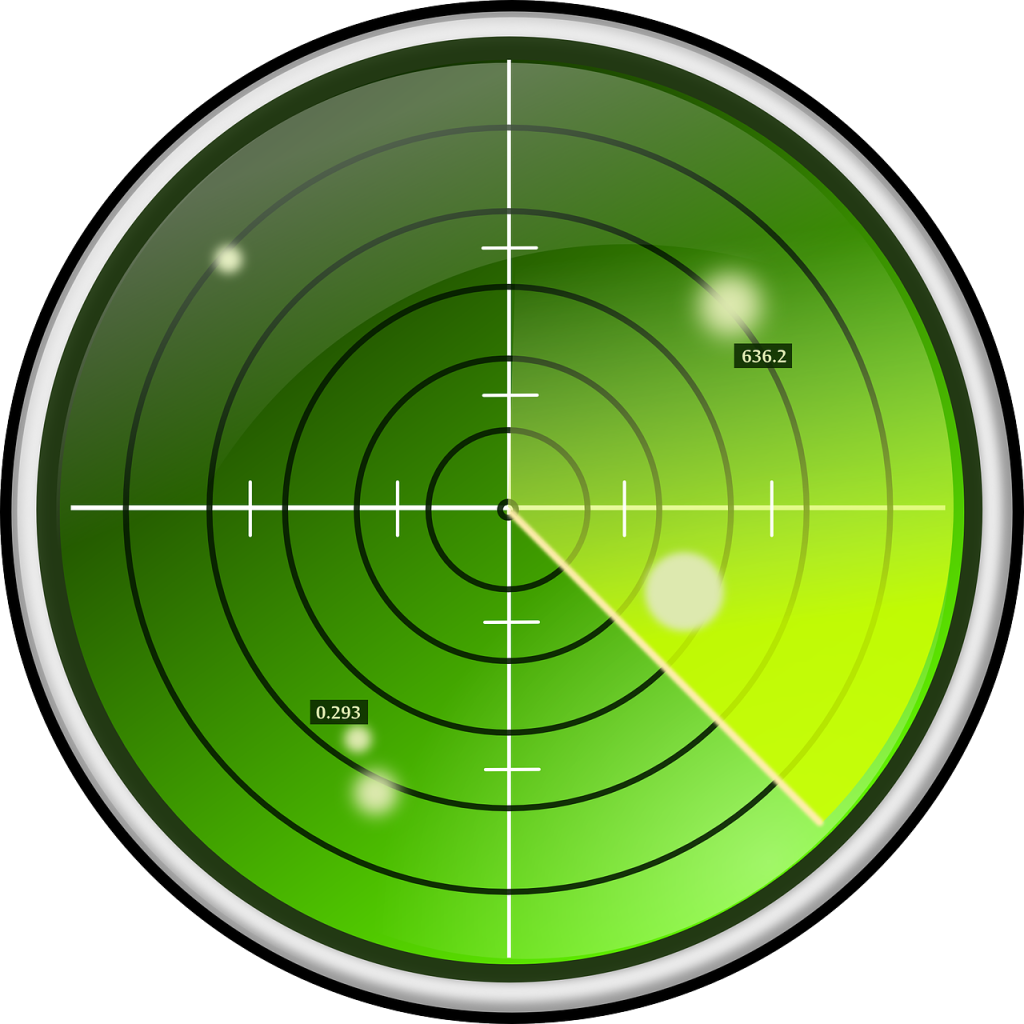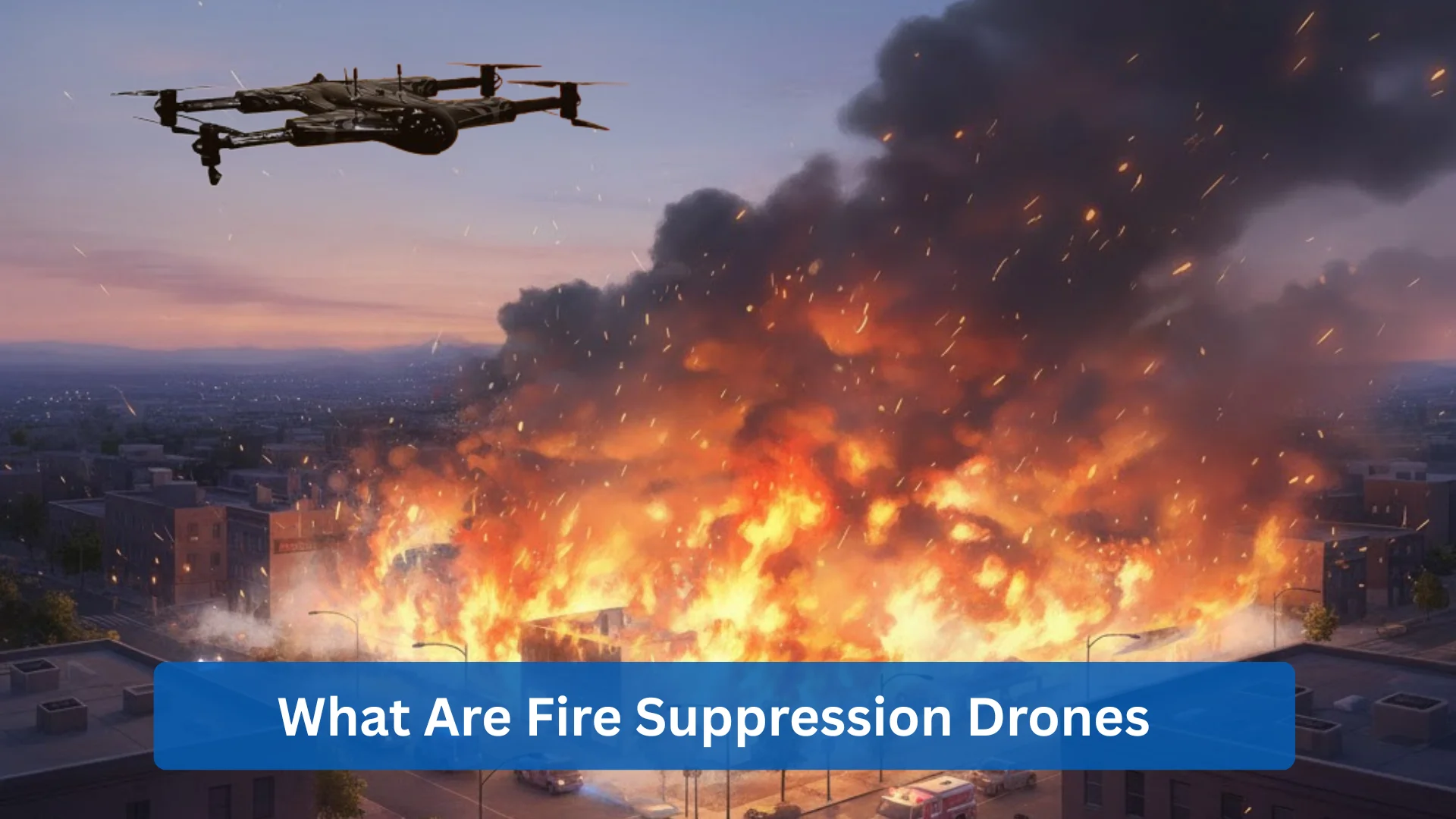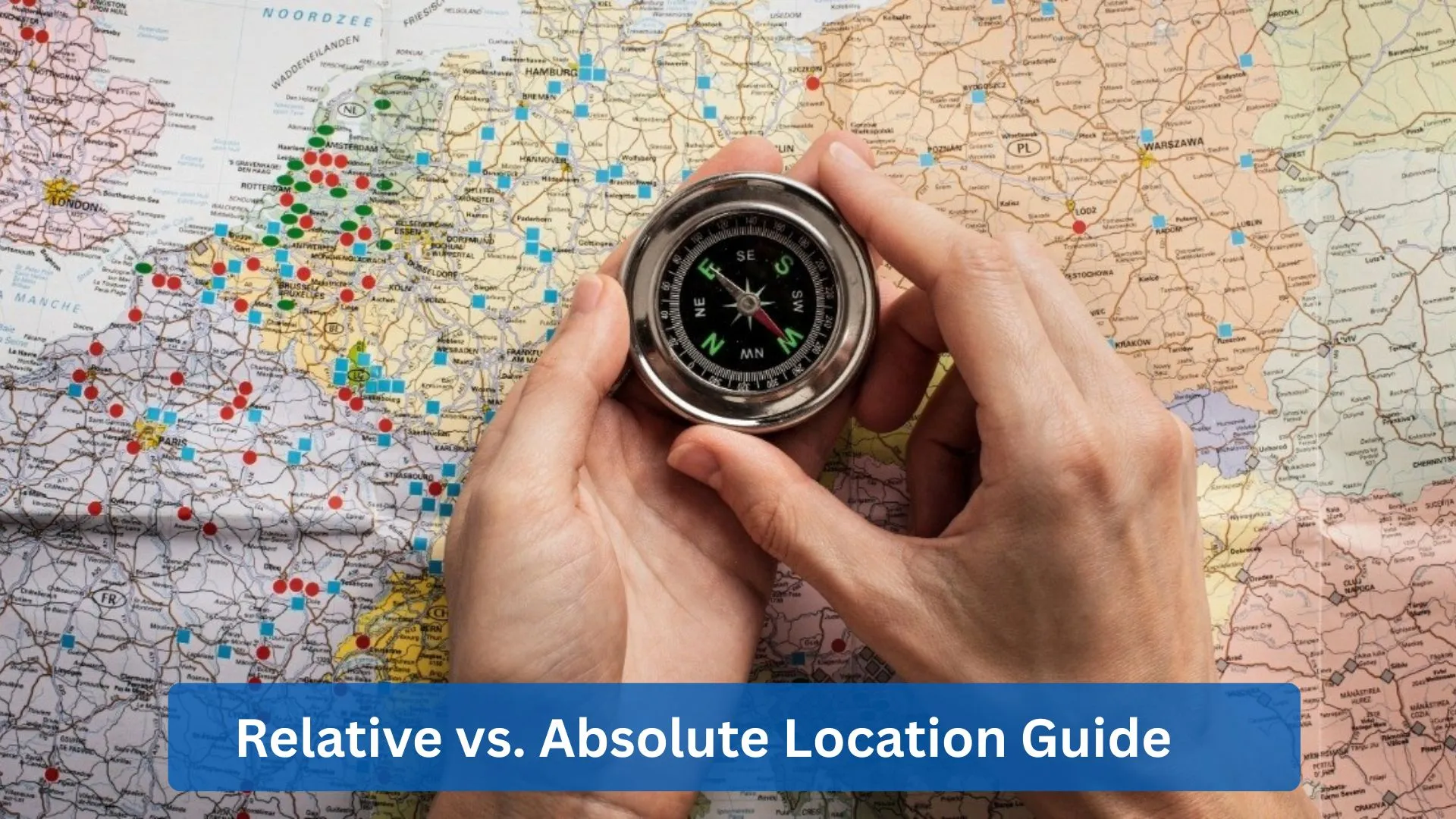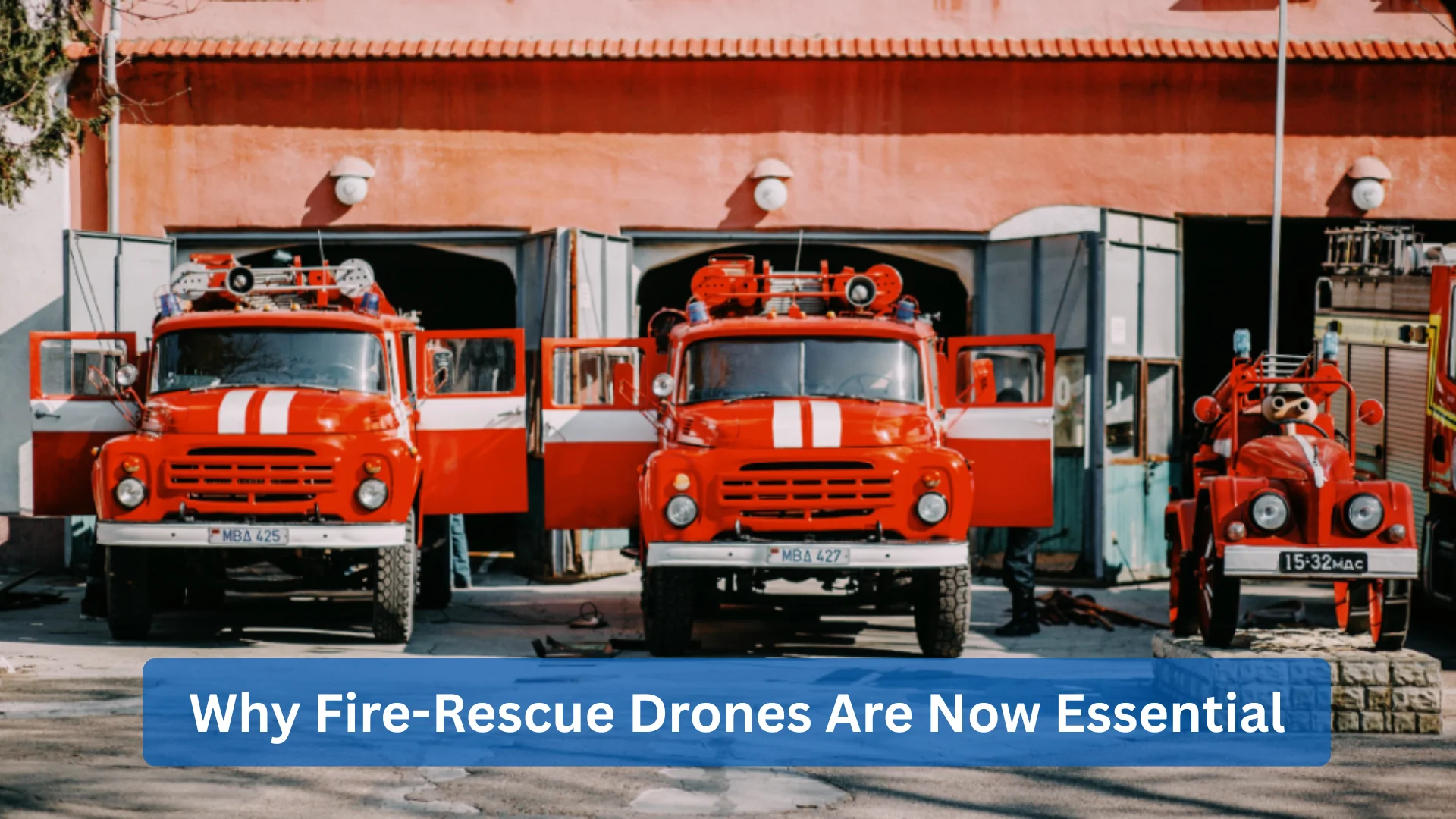Future of Security: Anti-Drone Technology System

While drones were initially developed for military use, they have since revolutionized civilian and commercial processes. Drones provide immense utility for everything from construction to agriculture, mining, the army, and police operations.
However, not all drone activity is beneficial. Drones can be used for unauthorized or malicious purposes, from unauthorized surveillance to smuggling. Others even disrupt commercial or military operations.
Anti-drone technology is a means to stop unauthorized drone activity. There are many ways to bring down unauthorized drones and track and apprehend their users. This article explores key aspects of anti-drone technology, including:
- What is Anti-Drone Technology?
- What are the Key Components of Modern Anti-Drone Systems?
- How Do Anti-Drone Weapons Work?
- What are the Military and Commercial Applications of Drones?
- Counter-Drone Technologies in Action
- What are the Advantages and Drawbacks of Anti-Drone Technology?
What is Anti-Drone Technology?
In a nutshell, anti-drone, or counter-drone technology, is used to counter drones. It includes detecting, classifying, and mitigating unauthorized or malicious drone activity.
The biggest dangers drones can pose are primarily related to privacy, security, and safety. They can threaten critical infrastructure like airports and power plants, and be used for smuggling or espionage.
Anti-drone tools have different functions and perform differently. In addition to detecting and classifying drones, users still need to stop them. Methods for stopping drones range from signal jamming and spoofing to kinetic interception.
What are the Key Components of Modern Anti-Drone Systems?
Anti-drone systems work on three main principles: detection, mitigation, and integration with existing security systems. There are a few main components of today’s anti-drone systems, which are:
1. Detection Systems
The first step in stopping hostile drones is checking if one is nearby. There are four main ways that detection systems can spot drones from a distance:
- Radio Frequency Analyzers – RF analyzers use antennas to receive radio waves. Specific systems can identify standard drone models, while others can identify MAC addresses and controllers.
- Geofencing – Geofencing uses local radio frequency identifiers (LRFID) and GPS networks to tag drones that fly over restricted spaces.
- Microphones – Also called “acoustic sensors”, microphones are another counter-drone technology used to detect the sounds drones make.
- Cameras – Standard RGB or thermal cameras can detect drones during the day or night. Recent advances in resolution and processing power make it easier for cameras to detect drones.
- Radar – Anti-drone radar sends a radio signal and uses the reflection bouncing off objects to determine their location. Specialized radar can easily track down drones.
2. Disruption and Mitigation Methods
Detected drones can be tracked in real-time, with some platforms using AI to distinguish between friendly or hostile drones. If the drone is considered hostile, the next step is stopping the drone and capturing it.
Drone signals can be disrupted, which can result in the drone being easier to catch. Here are a few ways to disrupt drone signals:
- Signal Jamming – Signal jammers are an anti-drone system that disrupts the signal between the drone and its controller. This signal disruption can cause a drone to hover, land, or return home.
- Spoofing – Anti-drone tools send false signals to confuse or hijack the drone. They can force the drone to land or change direction.
- Directed Energy – Lasers or microwave systems are currently being tested as ways to stop drones remotely.
- Kinetic Interception – Physical means, such as nets, projectiles, or other drones, can capture or destroy said drones.
3. Integration with Security Systems
An anti-drone system is most effective when integrated with other security systems. Security teams benefit from adding drones to their regular patrols, which lets them review drone footage and increase coverage areas.
What are the Different Types of Anti-Drone Devices?

Counter-drone technology aims to disrupt drone signals and intercept them to track down their controllers. Security teams can utilize more than one type of anti-drone device to monitor areas in real-time, such as:
1. Jammers
Signal jammers emit false signals to force drones to hover, land, or change directions. They work by interrupting the signal between the drone and its controller.
Jammers can be mobile or stationary. Recently, law enforcement agencies worldwide have been using mobile jammers to disrupt drone signals and make them easier to catch.
2. High-Power Microwave Systems
The use of microwave signals to intercept drones can make intercepting them more sophisticated. Microwave blasters can shoot intense bursts of microwave radiation to destroy drones’ electronic components.
However, it’s worth noting that while this drone disruptor technology is powerful, it’s also expensive. On top of that, these high-power systems are also stationary.
3. Anti-Drone Lasers
In recent years, high-energy laser systems have become more common as a counter to drones. They work like the aforementioned microwave systems in that they aim to destroy the drone’s electronics, but they use lasers instead.
However, much like high-power microwave systems, these are also power-intensive and expensive. As a result, they are often used only in military applications.
4. Drone-Catching Nets
Drone nets are the most accessible anti-drone device for most businesses and security teams. While nets are a reasonably traditional method, they work exceptionally well in tangling drone propellers.
The downside of nets is their limited range compared to their more expensive anti-drone counterparts. This limited range means they are used alongside other detection and disruption systems, such as mobile signal jammers.
How Do Anti-Drone Weapons Work?
With drones becoming so popular for commercial, military, and civilian use, anyone can get one. However, it also means drones are more likely to be used for unauthorized purposes.
Anti-drone systems are used to catch or neutralize drones. There are three main ways that anti-drone weapons work:
1. Kinetic vs. Non-Kinetic Systems
There are a few differences between kinetic and non-kinetic systems. For one, the former uses physical projectiles, such as nets, missiles, and counter-drones. However, these can create debris and risk collateral damage.
For non-kinetic methods, security teams have access to electronic interference. These can range from RF jamming to EMP (electromagnetic pulses) to disrupt a drone’s onboard electronic systems.
2. Directed Energy Systems
High-powered lasers and microwave systems are another type of anti-drone weapons used for neutralizing hostile drones.
In a nutshell, directed energy systems emit massive energy bursts to destroy a drone’s onboard electronics. Two popular examples of directed energy systems include lasers and microwave systems.
3. Counter-Drone Interceptors
In some instances, the best way to counter drones is with your own drones. These interceptors are connected by AI and swarm technology to anticipate flight paths, encircle, and bring down hostile drones.
Many military and security teams are investing in these defense drone systems to stop unauthorized drone activity. While they are relatively new, they can be helpful in cases when the previously mentioned systems fail.
What are the Different Military and Commercial Uses of Anti-Drone Technology?

Drones are becoming more advanced and accessible, making users more likely to fly drones into sensitive or critical infrastructure. As a result, drone security is becoming a bigger part of many industries worldwide.
Here are the ways anti-drone systems are used worldwide:
1. Military Installations
Military security is about more than keeping the skies clear. It’s also about keeping information secure, particularly on vital infrastructure and the number of stationed personnel and equipment.
Anti-drone systems and devices are crucial for security teams monitoring critical military infrastructure. They are especially effective along with traditional security and monitoring systems.
2. Airports, Stadiums, and Private Use
Commercial flights are often disrupted by unauthorized drones flying into commercial airspace. These drones can lead to plane crashes, causing significant damage.
Other commercial uses of anti-drone systems are for preventing drones from taking unlawful recordings during certain events. On top of that, private owners and businesses utilize counter-drone systems to prevent illegal surveillance.
3. Legality and Deployment Challenges
Homeowners and property owners can protect their homes and properties from unlawful surveillance.
However, homeowners face restrictions on the types of systems they can legally use. Additionally, certain counter-drone technologies have legal restrictions on who can use them and how they are used.
What are Examples of Anti-Drone Technology in Action?
Counter-drone options continue to be explored as drone technology becomes more sophisticated and accessible. There is a growing number of real-world cases where these options are becoming not only viable but also crucial.
Here are a few case studies of how drone protection is being used:
1. Ukraine Conflict
With the proliferation of drones and drone swarms, counter-drone technologies become vital for many reasons. These can range from counter-intelligence to broader defensive measures as drones are deployed for more direct combat.
2. Anti-Drone Systems at Airports
Many airports worldwide use anti-drone systems to detect and stop drones from crossing airplane paths.
In addition, there are existing regulations to prevent pilots from flying drones near airports. These regulations vary by country but are typically implemented as an additional safety measure.
3. Public Events and Concerts
Unauthorized drone flights at large concerts and public events cause significant problems for event organizers and broadcasters. In addition to streaming illegal broadcasts, these drones can also cause public safety concerns.
As a result, audiences can expect to see an anti-drone system deployed at public events in the next few years. These events can range from concerts to sports like football and baseball.
What are the Benefits and Drawbacks of Anti-Drone Technology?
Preventing unauthorized drone flights is crucial for many industries, especially for government organizations and functions. That said, no technology is perfect, and anti-drone technologies are no exception.
Here are the benefits and drawbacks of anti-drone tools and technologies:
1. Strengths
Counter-drone systems offer real-time protection from unauthorized drone use. Spotting drones manually can be difficult since drones can easily fly at heights that are hard to see.
As a result, counter-drone systems offer a way to spot unauthorized drones faster, leading to faster response times. Security teams can quickly and easily bring down unauthorized drones with these systems.
2. Weaknesses
While drone detection systems are fast, they aren’t always perfect. Without careful calibration, birds, animals, passersby, or even friendly drones can trigger false alarms in these systems.
Another drawback of these systems is their cost, particularly for directed energy systems. In addition, there are legal limitations on what anti-drone systems can be deployed.
The Future of Anti-Drone Technology
Rapid advances in drone technology also mean advances in anti-drone technology as the latter keeps up with the former. A few emerging trends for drone countermeasures include:
1. AI and Machine Learning Integration
Artificial intelligence and machine learning algorithms have been around for several years. Recently, more countermeasures for drones have been integrated into these systems to improve detection and identification.
2. Automated Tracking and Response
AI and machine learning are excellent at improving automated detection and tracking. As anti-drone systems continue to improve, more sophisticated systems will be available for consumers within the next few years.
3. Adoption by Civilians and Law Enforcement
Law enforcement agencies are adopting counter-drone technology to prevent unauthorized drone use. Civilians can also deploy anti-drone systems to protect against unlawful surveillance.
The Bottom Line
Drones have significantly transformed entire industries worldwide. However, with drones becoming more popular, especially for civilian use, new problems exist.
These can range from individuals afraid of unlawful surveillance to unauthorized flights causing significant damage to infrastructure. To counter these drones, effective anti-drone technology is crucial in protecting privacy and ensuring safety and security.
Counter-drone systems and tools are relatively new to the security landscape. However, they are set to become mainstays as drones become even more sophisticated and accessible.
Learn more about ZenaDrone’s solutions for secure operations at ZenaDrone.com.
Frequently Asked Questions (FAQ)
Here are a few commonly asked questions about anti-drone systems:
1. What is the best anti-drone system available today?
There is no one single best system for countering drones. The best system or combination of systems depends on the environment, the use context, and the rules of engagement.
2. Can civilians legally use anti-drone technology?
Civilians can legally use specific anti-drone tools, like radar and RF scanners, to detect drones. However, tools like signal jammers are illegal in the US and EU. Shooting drones is also prohibited and can harm people or damage property.
3. How do anti-drone jammers work?
Anti-drone jammers work by interfering with the drone’s and controller’s signals. These signal jammers can force the drone to hover, land, or change direction.
4. What industries benefit most from counter-drone systems?
Many industries benefit from anti-drone technology, such as airports, maritime security, and agriculture. Others, such as event security, also benefit from deploying anti-drone technologies
5. Is anti-drone technology effective at night or in bad weather?
Tools like radar and RF scanners can spot drones at night or in bad weather. Meanwhile, tools like acoustic sensors and optical trackers may be less effective.
Contact Us
Thank you for your message. It has been sent.
Latest Posts
Relative vs Absolute Location Guide
Difference Between GNSS and GPS
Social Profiles















